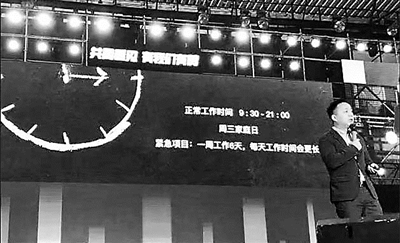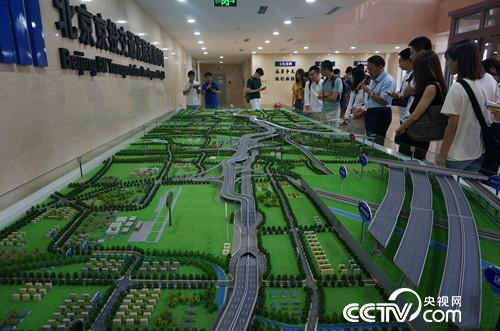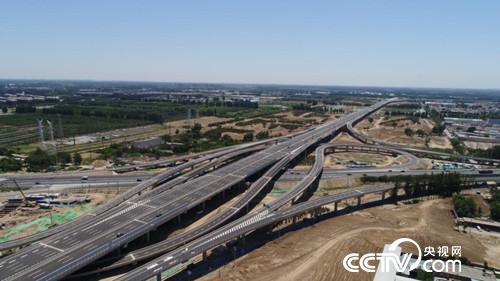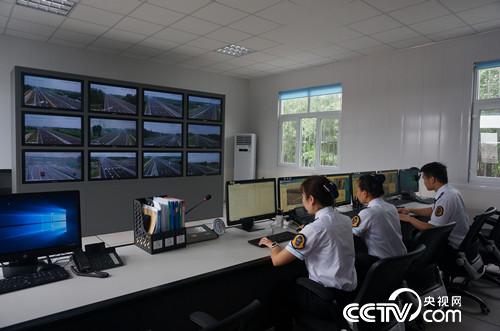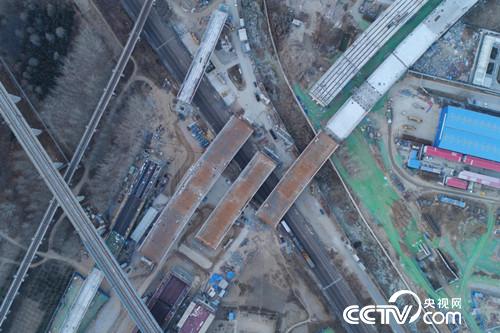People’s Daily Online, Beijing, June 28th (Reporter Lu Lin) In 2016, volunteering for the college entrance examination in various places is being staged intensively, and the questions of parents and candidates are constantly being gathered through the special topic of "volunteering for the college entrance examination to help groups" opened by People’s Daily Online Education Channel. Choose school or major first? How to improve the hit rate of "hot" majors? What if I am transferred to a major I don’t like? 50 college admissions directors and 9 volunteer guidance experts will help you.
|
|
Director’s advice
Deputy Director of Tsinghua University Admissions Office: Rationally fill in volunteers and don’t go with the flow.
Xu Ninghan, deputy director of the Admissions Office of Tsinghua University, sent a most practical strategy to candidates from a technical point of view: to consult the enrollment groups of all provinces (cities, districts) in colleges and universities at the first time. At present, most provinces (cities, districts) in China fill in their volunteers after the exam. After the candidates tell their professional interests and college entrance examination scores, the admissions team will give reasonable suggestions according to the situation. The school also hopes that candidates will fill in their volunteers rationally from the perspective of personal interests and future career development, not to follow the trend, not to sell themselves short, and not to follow the trend and choose "high scores" and "hot ones".
Director of Admissions Office of Shanghai Jiaotong University: Parents do research and children make choices.
Zheng Yihui, director of the Admissions Office of Shanghai Jiaotong University, said that students should be fully aware of their strengths and interests before applying for volunteering. "I don’t advocate parents arranged. Parents say that this major will develop well in the future and make money. In fact, no one can accurately predict what it will be like in 20 years. " Every profession will produce outstanding talents, and the key lies in interest. When you are interested, you enjoy your work every day. Parents should spend time studying what every major and industry does, and then let their children make their own choices.
Director of the Admissions Office of Nankai University: Professional obedience and adjustment to avoid high scores.
Shao Qinghui, director of the Admissions Office of Nankai University, warmly reminds candidates that majors should obey the adjustment and avoid high scores. Many majors are not what you think, and there are many opportunities to change majors or double majors when you enter the university. In the golden learning stage of life, we should learn more new knowledge, instead of choosing to repeat and do repeated exam-oriented learning.
Director of Admissions Office of China University of Political Science and Law: Make full use of the school enrollment policy.
Song Jingbo, director of the Admissions Office of China University of Political Science and Law, reminded parents to pay attention to three aspects of volunteering. First, China University of Political Science and Law gives priority to scores and there is no grade difference. Students must make full use of this policy; Second, it must be stable. According to the academic level and achievements, we must comprehensively and steadily determine the choice of applying for the exam according to the professional employment prospects. Don’t make rash or impulsive professional choices; Third, we should pay full attention to the research of volunteering, scientifically fill in volunteering, fully grasp the law of parallel volunteer’s filing, and arrange volunteering in various schools step by step.
Volunteer to fill in and guide experts’ advice
How to design a voluntary reporting scheme? Sun Cheng, a senior instructor of volunteering, said that parents need to focus on four dimensions, namely, scores, majors, colleges and regions.
The first dimension is score, which is an important indicator for choosing a university.
The second dimension is major, which determines the future career direction. Although it does not mean the future career, it will also affect children’s second and third choices. In today’s society, the division of labor is getting finer and finer, and the requirement of professionalism is getting higher and higher. Specialty will largely determine the direction and field of a person’s future development.
The third dimension is institutions, which decide who children associate with. Among the 2,879 universities in China, 39 are 985 universities and 112 are 211 universities. Different levels of universities have great differences in the quality of running schools, the allocation of teachers, the strength of disciplines, the hardware conditions and the learning atmosphere. Some non-211 universities also have great advantages in institutions and professional strength, so they should be treated rationally.
The fourth dimension is region, which will affect a person’s platform height, development width and vision breadth. For example, candidates who want to learn international economy and trade and get good grades in foreign languages will be better choices in big cities such as Shanghai, Beijing, Guangzhou and Shenzhen. After graduation, students are likely to be employed in the location of colleges and universities, so the choice of regions will have a great impact on the future.
What is the core process of volunteering? Sun Cheng believes that the first step can be to lock the best major according to the discipline specialty and career planning evaluation, the second step is to clearly fill in the batch layout, the third step is to clearly lock the scope of the target institutions, the fourth step is to arrange the professional order reasonably, and the fifth step is to make a comprehensive balance and determine the plan, that is, to consider what opportunities are there, whether to consider the minority languages, national defense students, free normal students, military public security and judicial police, Hong Kong, Macao and Taiwan universities approved in advance (Macau is relatively low, and some universities in Macau and Taiwan Province have two).
Sun Cheng said that many parents are afraid of wasting their scores when they fill in their volunteers, and think that the best result is to press the line to enter the school. The actual situation is that the scheme of stepping on the line is likely to make candidates fail to enter their favorite major. A good-looking scheme may not be a good scheme, but only the right one is the best.
Selected Questions and Answers of People’s Network College Entrance Examination Volunteer Group
Q: Our children want to study engineering, but we want them to study finance. What should we do?
You should first analyze whether your child is suitable to study engineering or finance. If your child is suitable, try to respect your child’s choice. Parents must not force their children to choose a major they don’t like, which may be counterproductive.
Q: When applying for the exam, how do you weigh the insurance college or the insurance major?
No matter what kind of application strategy is adopted, we must ensure admission, and we can’t quit the file. After quitting the file, we can only fill in the collection of volunteers. If you want to ensure colleges and universities, there may be very few choices for majors; If you want to ensure your major, you must lower the level of colleges and universities, that is, you could have entered a 985 college, but you can choose the related major of 211 college because you are too strong to go to 985.
There are generally three situations in which colleges and universities are rushed. First, the enrollment charter clearly States that the proportion of filing is 100%, so it’s time to rush. For example, a school recruits 50 people, and the proportion of file promotion is 100%. Only 50 students enter the file, and they will not quit the file if they obey the professional adjustment. Second, it is clear that candidates who obey the adjustment will not retreat from the file, like China Ocean University. Third, those with few enrollment plans and low investment ratio can go to colleges and universities.
Q: What should I do if I am afraid that I will be dismissed from school if I don’t obey the adjustment?
Under normal circumstances, candidates are advised to obey professional adjustment. How many situations can you disobey? The first one is that the performance is particularly high, and it ranks among the best in a province. Generally, colleges and universities are more humanized and will not change majors for candidates. For example, the volunteer satisfaction rate of Tsinghua Peking University is above 90%. The second type is that you can not obey the application in advance, and even if you don’t accept it, it won’t affect the next batch of applications. For example, colleges that apply for small languages will only consider applying for Russian, German and Spanish, and other languages will not be studied, so you can not obey the adjustment. The third is to assume that last year, a student scored 548 points in a line in a province, and scored 549 points, and enrolled in 36 majors in 6 schools. The sixth school selected the best 6 majors in the school. If it is not acceptable to transfer to other majors, you can fill in the disobedience and then find a suitable institution and major in the next batch.
Q: If I go to a high school, my major may not like it very much. Can I change my major when I enter the university?
Many universities allow students to change majors, and there are generally three ways: 1. Freshmen and sophomores can apply for changing majors after entering school; Continue to study this major and minor in the major you want to change, which is common in some schools, such as economics and law, and many students minor in it; 3. Change your major when you are a graduate student. It should be noted that it is difficult for freshmen and sophomores to apply for a major change, because the basic courses are different, and it is necessary to supplement some important basic courses to change majors. Unless the grades are excellent, it is generally impossible.
Q: I just want to apply for a hot major. Is there any strategy?
If its own competitive strength is strong enough to support famous universities and popular majors, it is best, but its competitive strength is not very strong. In the dilemma, we can choose: 1. Apply for popular majors and lower the grade of batches or colleges; 2. Do not lower the level of colleges and universities, give consideration to both heat and cold, and choose acceptable majors.
Q: What if a batch of students in parallel volunteer are not accepted, and there are no good schools and majors to collect volunteers after they drop out?
Online candidates who have not been admitted to parallel volunteer are completely determined by themselves whether to participate in the solicitation of volunteers. If candidates think that the colleges and majors in the solicitation of volunteers are in line with their voluntary wishes, they can actively fill in the form according to the regulations and increase their admission opportunities; If the recruitment of a volunteer secondary school major does not meet your wishes, you can not fill in the form at all. Of course, if you don’t participate in the recruitment, you can only wait for the next batch of admission.
